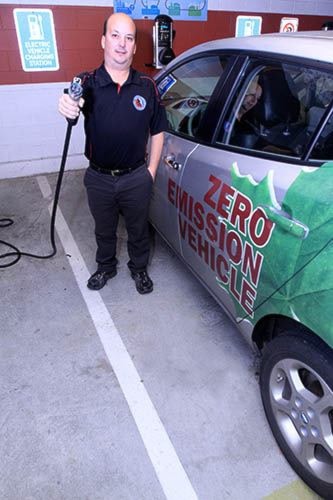Seven years ago, Maple Ridge was belching out 355,833 tonnes of greenhouse gases.
That was the total pumped in 2007 from vehicle exhausts, home furnace stacks, lawn mowers, sawmills and shopping malls.
Three years later, as part of the city’s own micro-contribution to combatting climate change, that had dropped to 345,275 tonnes, a three-per-cent reduction.
Will Maple Ridge reach its goal of cutting the production of greenhouse gases to 33 per cent below 2007 levels – by 2020?
Coun. Bob Masse doubts it.
“It’s good to see that we’ve come down,” he says.
Even while Maple Ridge’s population grew by six per cent in those three years, total greenhouse gas production dropped by three per cent, despite all the new cars and homes that have appeared in Maple Ridge since.
But, “If we extrapolate those numbers, we’re not going to come near the 33-per-cent overall drop by 2020,” Masse said.
Maple Ridge’s climate action charter commits the city to cutting its carbon dioxide output for the entire community, not just municipal operations.
This target, shown on the Community GHG Emissions Scorecard, is part of Maple Ridge’s official community plan.
Masse, though, wants to take a look at those targets to see if they’re still realistic. He first thought of the issue when the city passed its transportation plan in the fall.
“What I wanted, was to look at our starting point, and then say, where are we now?
“What are we doing to achieve those targets? Are our targets realistic?”
He also wants to look at how Maple Ridge grows and how that impacts the production of greenhouse gases.
“I think the whole conversation of global warming is extremely relevant.”
Look what’s happening in California, where thousands of hectares of farmland are being lost to drought, he pointed out.
Masse is encouraged that the most recent numbers, compiled from data based on electric and natural gas consumption, car registrations, housing permits, industrial operations, show that the community of Maple Ridge had decreased the production of greenhouse gases in those years between 2007 and 2010.
“I think, municipally, we’re doing better than what they’re doing federally.”
When it comes to cutting greenhouse gas production in Maple Ridge, he also wants the conversation to include what type of houses people live in.
“I think we have to sort of refresh the conversation and have it as part of the conversation.
“I think we have to raise the conversation and then set some realistic goals … and make them part of our thinking.
He points out that greenhouse gas production is far greater from a single-family suburb with roads and cars compared to the multi-storey residential tower.
He sees weighing the environmental costs of development converging with the recent trend by cities to evaluate the total financial costs of various types of housing.
“You’ll see it become a topic of conversation very soon I think.”
Sooner or later every project will be evaluated on such costs. Mission has started a pilot project that evaluates the costs of one particular project.
“What are the true costs, immediate costs, 10-year costs, 20-year costs?”
Laura Benson, the city’s sustainability manager, points out Maple Ridge has reduced the emissions from its cars and trucks by more than 2,000 tonnes, possibly because of more hybrid or electric vehicles on the road.
But she notes, the city keeps growing and more people and cars and trucks continue to arrive.
Emissions from the use of natural gas to heat buildings are another bright spot. Benson points out greenhouse gas emissions from that source have dropped by 10,000 tonnes in those three years.
That could be because of more efficient furnaces and homes, better insulation or even just because of warmer winters.
Benson said the city is making ongoing efforts to reduce the greenhouse gas contributions from its own operations wherever possible.
Two major projects have been the construction of Fire Hall No. 1 using energy-efficient measures such as geothermal for heating the building.
Another major initiative was the installation of solar thermal panels on the Leisure Centre to provide heat for the swimming pool.
The City of Maple Ridge has also converted most of its fleet to alternative fuel. It now has four completely electric Nissan Leafs and 30 out of 40 cars of the vehicle fleet are hybrids, either Ford Escapes or Toyota Priuses.
